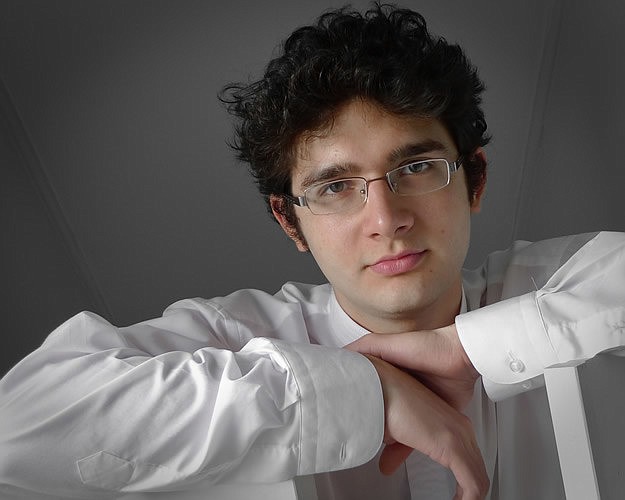- April 17, 2024
-
-
Loading

Loading

Remember the teacher you had in high school who informed the class he was going to “mark on a curve” to put everyone in the best possible light? That’s what I’m going to be doing in this review of the recent Haifa Symphony Orchestra of Israel concert performed at the Van Wezel.
By any standards of musical excellence, this ensemble must be considered a community orchestra; one that hopes to become professional but, for now, is more of an amateur group that loves to make music.
Founded in 1950, the orchestra — according to the program notes — “has become the focal point of musical life in Haifa and the north of Israel.” It has several thousand subscribers “of all ages” who attend its six subscription programs. And the orchestra has done great things for the community: reaching out to children, holding master classes and offering the people of northern Israel opportunities to hear the great music they love.
Last week’s concert in Sarasota was the orchestra's first performance of its first American tour, and it tried extremely hard to live up to the sparkling image Americans have of Israeli musicians. The Israel Philharmonic, for instance, isn’t exactly chopped liver. The Haifa musicians succeeded primarily in showing us they are amateurs in the best sense of the word: They love music and they love to play.
Led by Professor Boguslaw Dawidow, the ensemble’s principal guest conductor, the program was traditional: overture, concerto, symphony.
Starting with Weber’s Overture to “Euryanthe,” the musicians showed little bite in their tone and several problems with intonation as well as entrances in every section. The same difficulties showed up in Tchaikovsky’s passionate B-flat major Piano Concerto with soloist Roman Rabinovich. The brass was too loud; the strings weren’t together; the forte sections of the work drowned out the pianist; and there was little collaboration between the soloist and conductor. The wonderful pizzicato strings that open the second movement were sloppy and, again, the bite that’s so important in plucked playing was missing.
Rabinovich, who seems like a musical young man with a decent technique (he’s listed as having been a child prodigy and winner of a couple of prestigious competitions), was not up to the demands of the concerto and played with little understanding of the style and little musical definition.
The orchestra seemed a little more comfortable with Beethoven’s Symphony No. 7. Perhaps it had played it more often or had more rehearsal time with the work. Still, there was little attention to dynamics and a general lack of energy, and there were many wrong notes and inaccurate entrances. Even the rests were perfunctory. Composers write rests into music with the idea that those silences are part of the tapestry of sound. In the hands of Dawidow and the Haifa Symphony, the rests were merely empty spaces, making the music disjointed and superficial.
However, the two (yes, two) encores the orchestra played were probably the best parts of the concert. Starting with an excerpt from “Schindler’s List,” featuring the excellent viola soloist Avshalom Sarid, we heard a ravishingly beautiful sound and a sense of style we had not heard in the earlier works. A fun reading of “Stars and Stripes,” though barely audible because of the rhythmic clapping from the audience, encouraged by the conductor, was rousing and heartfelt.
It’s terrific that this orchestra has the support to tour. The more its musicians play for different audiences, the more they’ll learn and, we hope, the better they’ll get. Love of music-making is what counts. Should that love be foisted on a public paying top dollar? That’s the subject of a different column.